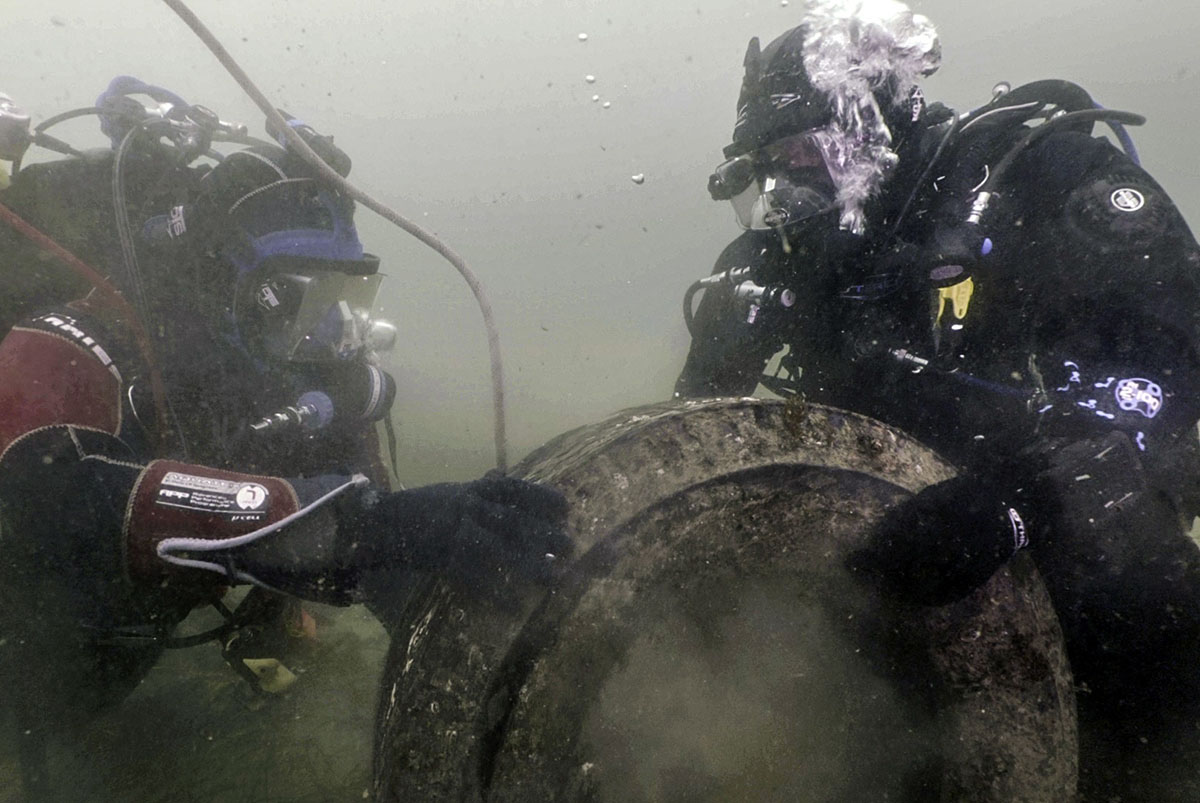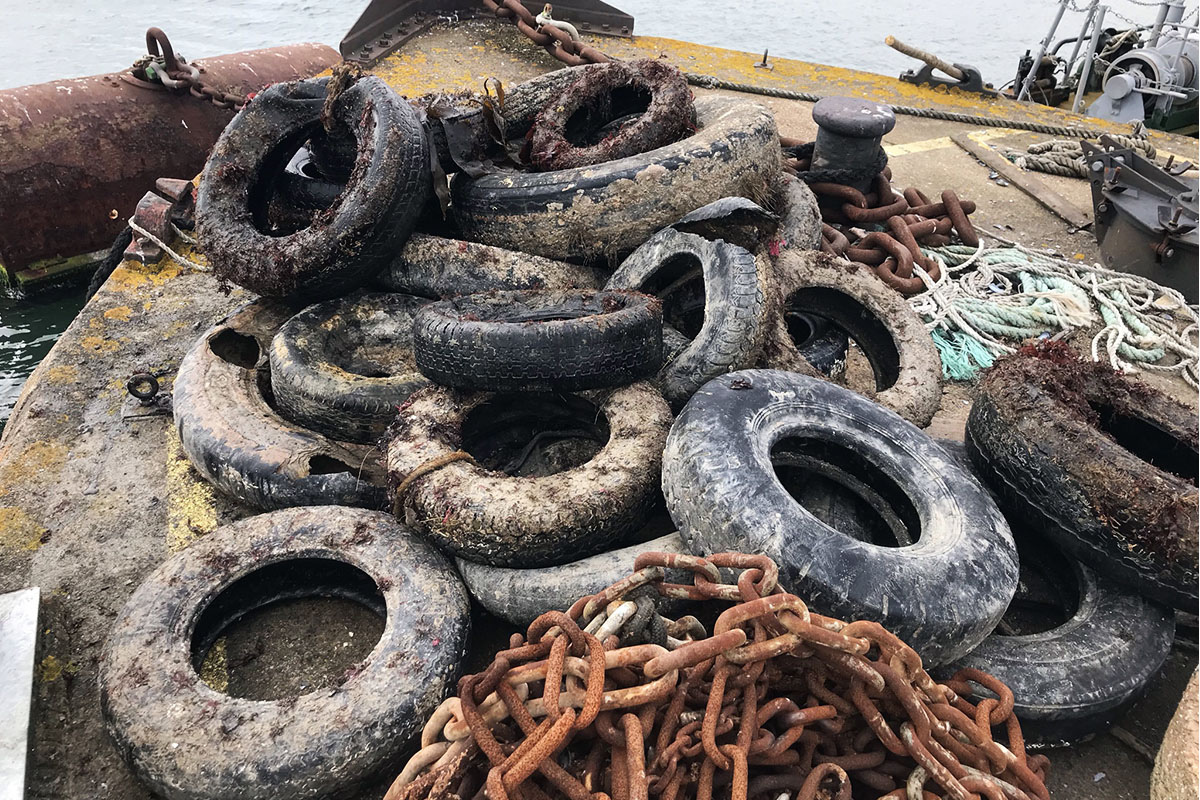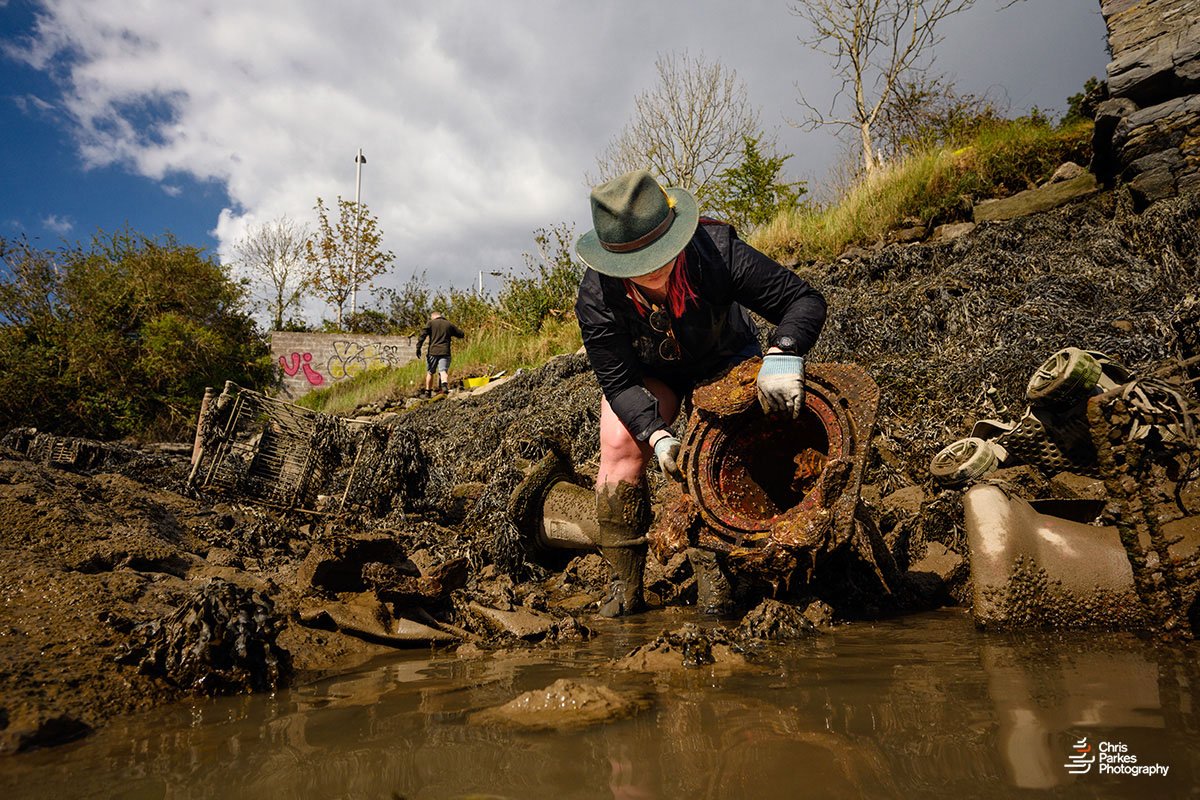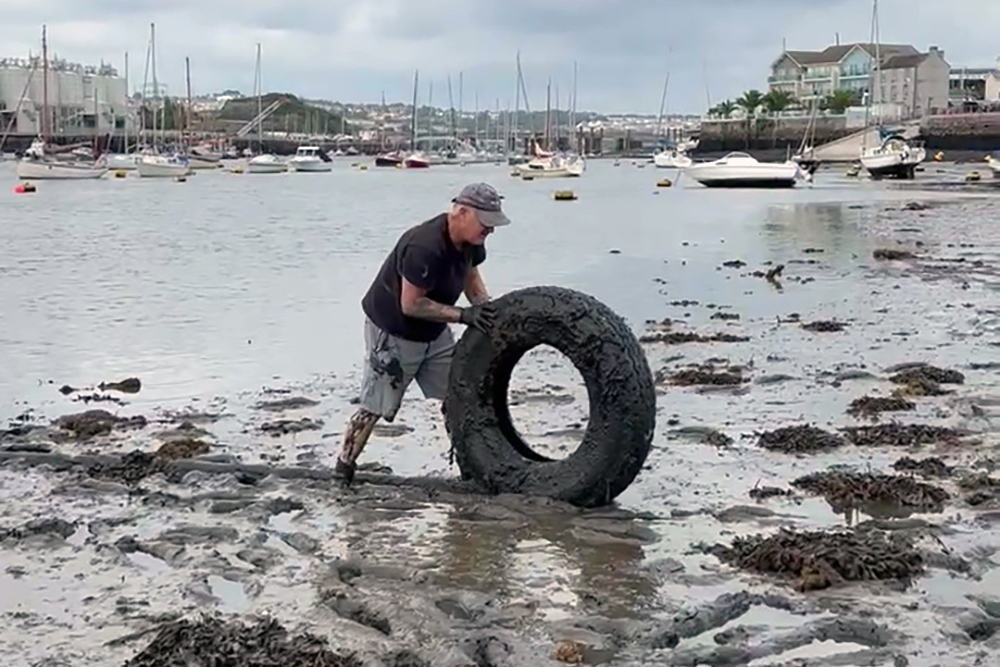Clean-up Operations
How to Clean Up Plymouth Sound
The 1000 Tyres project team is removing polluting materials from Plymouth Sound and its estuaries, recovering tyres, plastics, and other rubbish from the foreshore and underwater. The process we use is the same if we are working on land or underwater:
- Searching - Locate polluting materials on land by fieldwalking and underwater using sonar.
- Recording - Record the type, location, and size of the polluting material in our digital map.
- Removing - Remove the polluting material if it is safe to do so.
- Recycling - Recycle the tyres and other junk.
We are busy evaluating methods for recovering and disposing of waste from the sea, so our work so far has been to test different options. Once the disposal chain is set up then we will switch over to large scale recovery operations.
Working on the Foreshore
Searching
We locate tyres and other junk on the foreshore by doing fieldwalking surveys at low tide, using drones to quickly survey areas or through people reporting items to us. Care is needed when exploring the foreshore as it is possible to get stuck in deep mud or to have your exit from the beach be cut off by the tide, so the team who do this work are trained by the 1000 Tyres project.
Recording
All the polluting material is recorded in our digital map, we record where the object is, how big it is, the type of material and include notes about its condition and state of burial.
Read more about how we record information from the foreshore here ![]() .
.
Removing
Using the digital map, we plan recovery operations to remove polluting materials from an area of foreshore. The map tells us what volume and type of materials we can expect to recover, but often we come across more junk when recovering something that has been reported. Objects that are deeply buried may have to be dug out of the mud by hand before it can be recovered, this can be time consuming so sometimes we do this before a recovery campaign.
Working Underwater
Searching
The seabed is hidden from most people other than divers, and the usually poor underwater visibility in the area hides most of the seabed even to them. Sports divers tend to dive in the same places, usually on shipwreck sites, scenic reefs, or shore dive locations, so large areas of the seabed in Plymouth Sound may never be seen by anyone. Visibility is often too poor for divers to see anything in the Tamar and Plym rivers so very little of the riverbed has ever been seen. However, we can see what is on the seabed using sonar, using acoustic signals to ‘see’ through water to image the seabed in great detail, with some instruments capable of imaging something as small as a beer can or a steel cable only 20mm in diameter. The 1000 Tyres Project team uses survey information donated to us and we also undertake our own geophysical surveys in the Tamar waterway.
Read more about how we search underwater for tyres and other junk here ![]() .
.
Recording
We interpret the sonar data to locate and identify any man-made objects on the seabed which are then added to our digital map. All the polluting material is recorded in our digital map, we record where the object is, the water depth, how big it is, the type of material and include notes about its condition and state of burial.
Read more about how we record information from the sonar surveys here ![]() .
.
Removing
Using the digital map we plan dives where we remove polluting materials from an area of seabed. The map tells us what volume and type of materials we can expect to recover, but often we come across more junk when recovering something that has been detected by the sonar. Working underwater is more difficult than on the foreshore as the time you can spend underwater is limited, you often cannot see much especially after lifting a tyre, and we need lifting equipment to recover heavy objects. Working safely is very important and all our divers are trained to work underwater and to recover large objects from the seabed.
Recycling
All the material recovered from the foreshore and underwater is taken to a recycling centre to be sorted and packed, before being sent off for recycling. The tyres are turned into fuel while the steel and plastic material is reused.
We are currently working on setting up how we dispose of the waste material so more information will be available shortly.
Recovery Operations
To find out more about what we have recovered from Plymouth Sound and its estuaries ![]() .
.
Last updated 29 Oct 2023
Click the images for a larger version
Image use policy
Our images can be used under a CC attribution non-commercial licence (unless stated otherwise).




